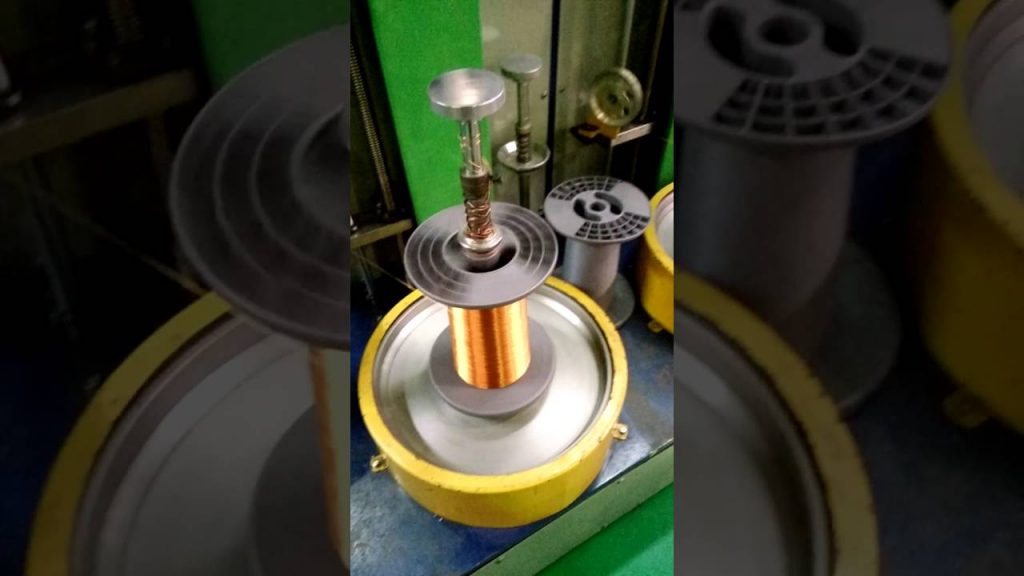Check the coil packing solution with a leading manufacturer for the professional solution right here:
Understanding Wire Production: A Comprehensive Guide
Introduction
Wire production is a crucial process that plays a significant role in various industries, including automotive, electrical, telecommunications, and more. To ensure high-quality wire products, manufacturers rely on advanced equipment and manual processing techniques. In this article, we will delve into the intricacies of wire production, exploring the manufacturing process, types of wires produced, and the importance of manual processing techniques.
Understanding Wire Production
Wire production involves the transformation of raw materials, such as copper, aluminum, or steel, into wires of different sizes and specifications. This process requires a combination of advanced machinery and skilled personnel to achieve the desired results.
Manufacturing Process
The wire production process typically consists of the following steps:
1. Wire Drawing: The initial step involves pulling the raw material through a die to reduce its diameter and increase its length. This process is known as wire drawing and is achieved using specialized machinery.
2. Annealing: After wire drawing, the wire may undergo an annealing process. Annealing involves heating the wire to a specific temperature and then slowly cooling it. This process helps enhance the wire’s ductility and improve its mechanical properties.
3. Stranding: In some cases, wires are twisted together to form strands. This process, known as stranding, is commonly used in cable manufacturing, where multiple wires are combined to increase flexibility and strength.
4. Coating: To protect the wire from corrosion or to provide insulation, a coating may be applied. Coating materials can include polymers, such as PVC or nylon, or metallic coatings like tin or silver.
5. Quality Control: Throughout the wire production process, quality control measures are implemented to ensure that the wires meet the required specifications. This includes conducting tests for strength, conductivity, and durability.
Types of Wires Produced
Wire production caters to a wide range of applications, resulting in various types of wires. Some common types of wires produced include:
1. Electrical Wires: These wires are used for transmitting electric current in residential, commercial, and industrial settings. They are typically made of copper or aluminum due to their high conductivity.
2. Communication Wires: These wires are utilized in telecommunication systems, including telephone lines, internet cables, and fiber optic cables. Communication wires are designed to transmit signals over long distances.
3. Automotive Wires: Automotive wires are specifically designed for use in vehicles. They are used to connect various electrical components and systems, ensuring smooth operation and functionality.
4. Industrial Wires: Industrial wires are used in a wide range of industrial applications, including machinery, equipment, and manufacturing processes. They are often subjected to harsh environments and require durability and reliability.
The Importance of Manual Processing Techniques
While advanced equipment plays a crucial role in wire production, manual processing techniques are equally important. These techniques ensure the best possible results by allowing skilled personnel to oversee and fine-tune the production process.
Manual processing techniques involve:
1. Visual Inspection: Skilled technicians visually inspect the wires at various stages of production to detect any defects or irregularities. This ensures that only high-quality wires are released for further processing or distribution.
2. Precision Cutting: Manual cutting techniques are employed to ensure accurate wire lengths and minimize waste. Skilled operators use specialized tools to cut wires to the required dimensions.
3. Customization: Manual processing techniques allow for customization of wires to meet specific customer requirements. Skilled engineers can modify wires by adding connectors, terminals, or other components as needed.
Conclusion
Understanding wire production is essential for anyone involved in industries that rely on wires. By combining advanced equipment with manual processing techniques, manufacturers can produce high-quality wires that meet the diverse needs of various applications. Whether it’s electrical, communication, automotive, or industrial wires, the attention to detail and precision during the production process ensures reliable and efficient operation.
Check the coil packing solution with a leading manufacturer for the professional solution right here: Steel wire production line
“Mastering the Art of Wire Harness Production: A Comprehensive Guide to Understanding Wire Production Techniques”



